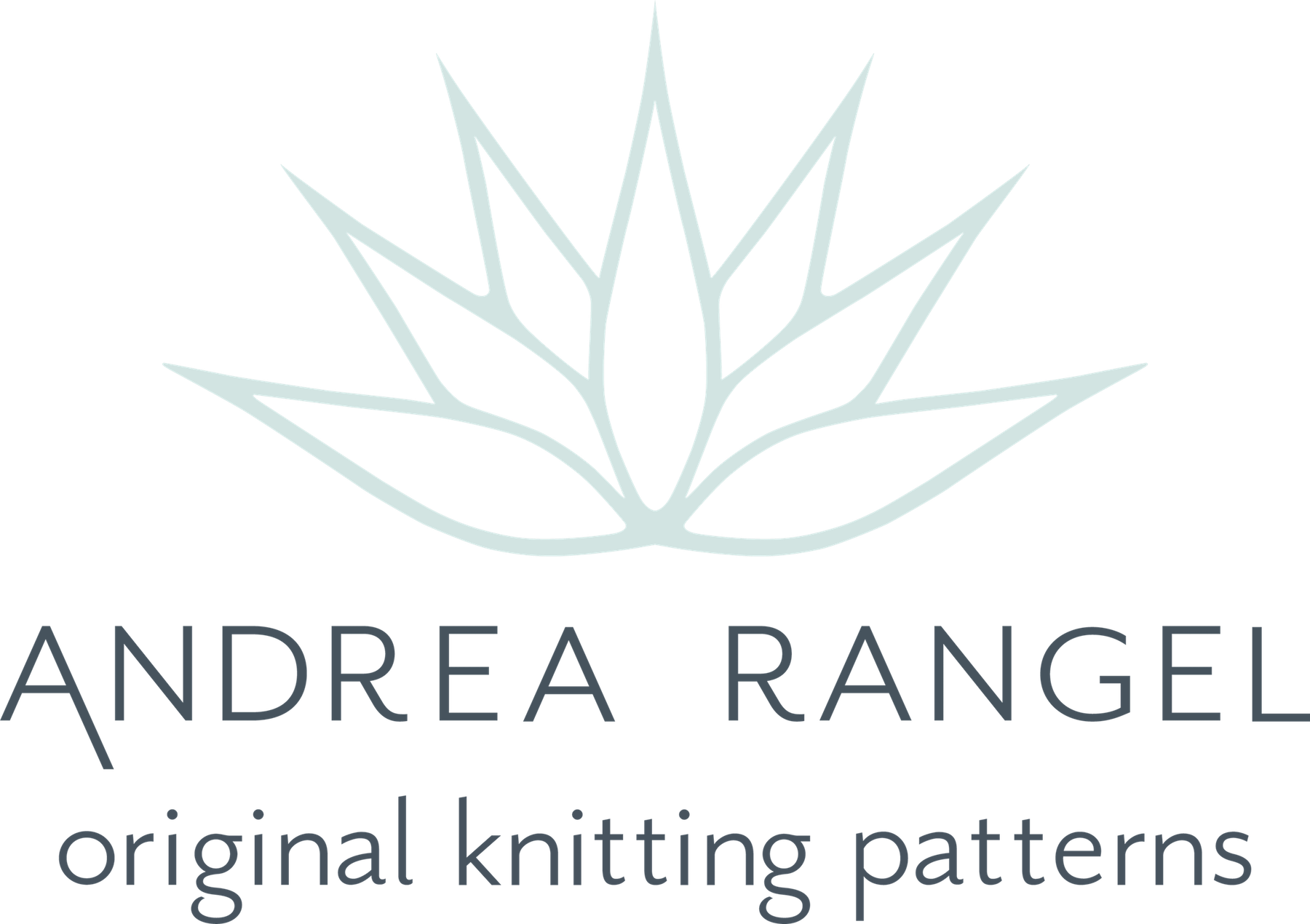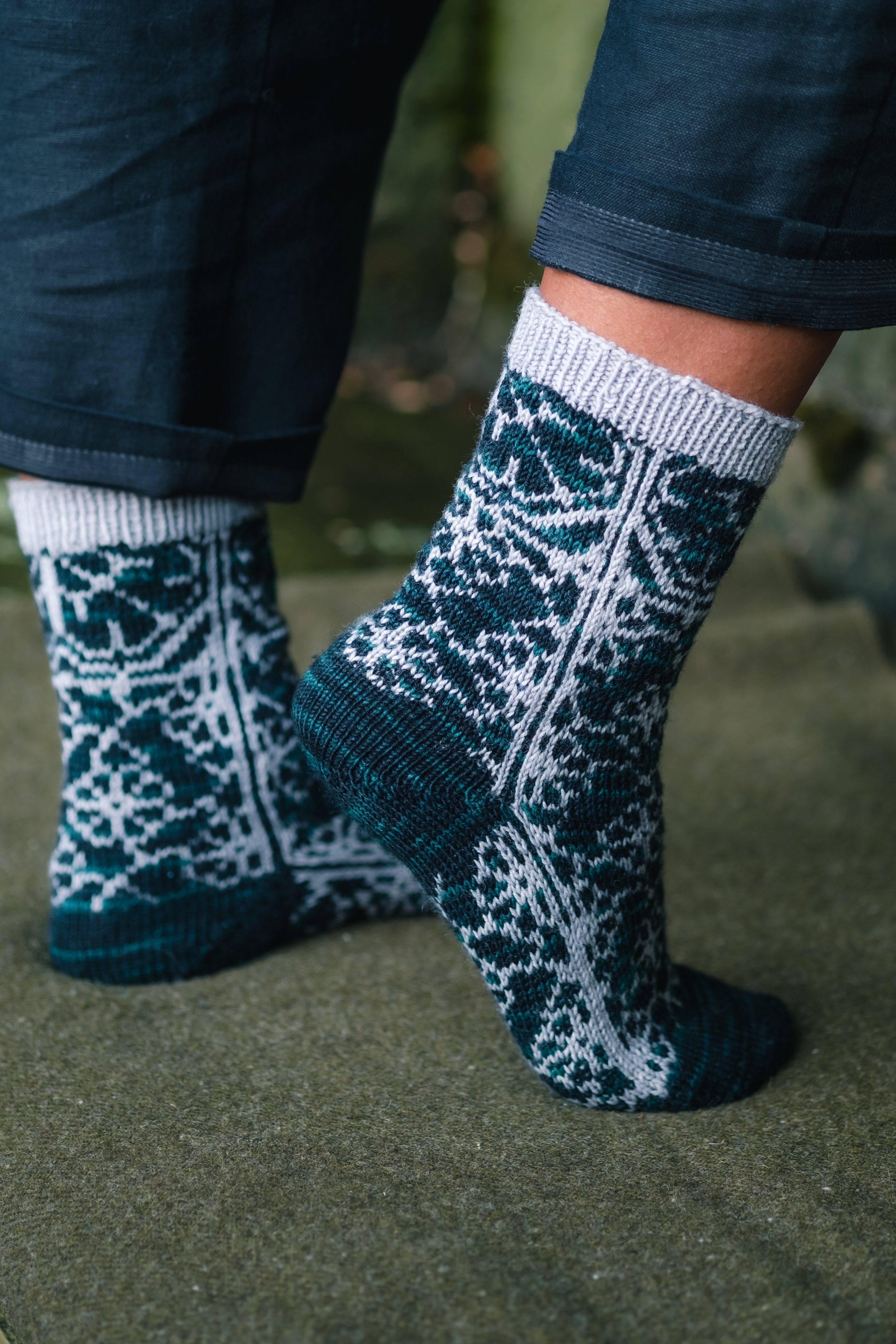Climbing Flowers Socks FAQ
A celebration of the messy perfection of nature
My newest pattern, Climbing Flowers is now available! You can get the pattern here on my website or on Ravelry. Here’s an FAQ to help you get going on your project.
FAQ
All that colourwork looks intense. Are these too hard for me?
Of course difficulty level is really subjective and it depends on how comfortable you are with a variety of skills like knitting small circumferences and colourwork. If you’re comfortable with both of those techniques, this project isn’t difficult, but it does require pretty constant attention since the colourwork motif isn’t easy to memorize.
That’s actually part of the appeal for me. Knitting my sample felt like a meditation in which I could savour the textures and colours without distractions, almost like a hike in the woods.
If you’re not confident in your small-circumference knitting, you might try a simpler sock pattern to start like A Checklist of Birds or Wildflower Meadow.
If you’re not sure about your colourwork skills, I’d suggest a hat pattern like Dissent Toque or Botanical Beach.
Regardless of your skills, though, think of this project as a way to challenge yourself and build your knitting ability to through practice.
I thought all-over colourwork wasn’t stretchy enough for socks. Will I be able to get these on and off my feet?
In order to actually wear socks, they have to stretch enough to get over the heel and then bounce back so they’re not baggy. And it’s true that stranded colourwork fabric is denser and less elastic than unpatterned Stockinette stitch, which can make socks with all-over colourwork seem tricky. In order to make sure these socks would be practical, I added a few features that I haven’t needed in my other sock designs.
First, these socks actually have several different gauges controlled by changing needle size. I love a very tight gauge for socks because I think they’re more comfortable and durable. But a very tight gauge makes denser, less elastic fabric, so I used a tight gauge where it’s most needed — at the toes and heels — and loosened up the gauge for the instep and leg so that the fabric is stretchy enough for getting on and off. That means you’ll switch needle sizes a few times during the pattern. The instructions clearly tell you when to do that.
Second, I added shaping to the foot. These are worked toe-up and about half-way through the foot, there’s an increase round. I also quite like the look this creates on the sides of the feet.
Because of these little features, you can have some gorgeous colorwork socks that fit!
Haven’t I seen those flowers somewhere before?
Thanks for noticing! The main floral motif is from my book, AlterKnit Stitch Dictionary. The motif is called Traveller’s Joy and it can be found on page 94 of the book. I actually worked on a bunch of floral motif ideas for this project before I realised that the motif I really wanted already exists. In my own book. Consider this another encouragement to use AlterKnit for your own creative pursuits!
I love the all-over motifs for things like socks because they’re so versatile. To use Traveller’s Joy for all the sizes, I centred the motif and then repeated it. Extra stitches that didn’t fit neatly into the repeat number are partial motifs on either side of that centred chart. This works because the top and bottom of the top are divided by shaping by a 2-stitch line so the pattern doesn’t have to fit exactly around the foot. If you’re so inclined, you could definitely grab another motif from the book and use it instead.
I did design the big half-flower at the top of the ankle fresh for this pattern.
What yarn should I use?
Neighborhood Fiber Co. Organic Studio Sock is a really great sock yarn. It’s durable, very soft, comes in a stunning range of colours, is environmentally responsible, and is created by a really fantastic company that’s active in their community. Have a look at my yarn review here.
But there are so many amazing sock yarns out there that would work well. Look for a fingering weight superwash wool. A little nylon in there is fine if you like that for durability and if luxury softness is your thing, these would work in a Merino/Cashmere/Nylon blend, but just keep in mind that MCN is less durable than plain Merino or Merino/Nylon, and I suggest only using MCN if you’re comfortable with colourwork because it’s a bit more slippery, so it could be a little more difficult to keep those stitches even.
My other favourite sock yarn is Hazel Knits Artisan Sock.
And if you want the colourwork to pop, choose one light and one dark colour.
Are there tutorials to help with this project?
Sure are!





